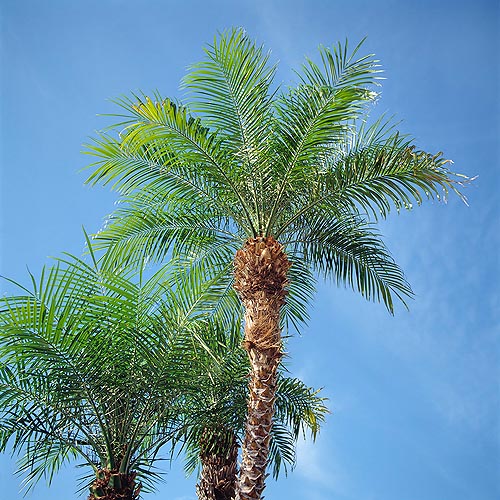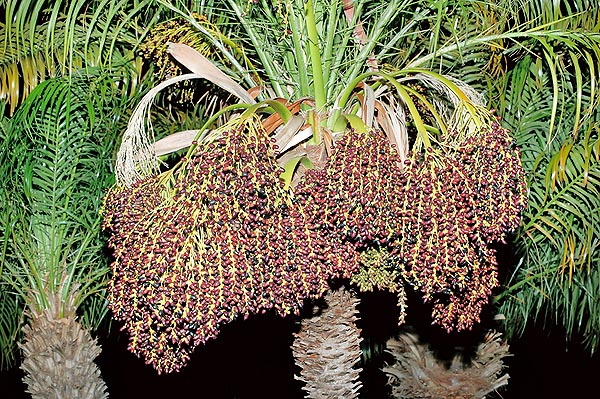Family : Arecaceae

Text © Pietro Puccio

English translation by Mario Beltramini

The Phoenix roebelenii is a small palm, not taller than 3 m © G. Mazza
The name of the genus is the Greek one, which was given in the antiquity to the date-palm.
The species has been honoured to the German collector Carl Roebelen (1855-1927), who discovered it in Laos.
In the English-speaking countries, it is known mainly as “miniature date palm”, and “pygmy date palm”.
Common names: “palma da datteri nana” (Italian); “miniature date palm”, “pygmy date palm”, “roebelin palm” (English); “palmier dattier miniature” (French); “tamareira-anã”, “tamareira-de-jardim” (Portuguese); “fenix robelini”, “fenix robelini tronco grueso” (Spanish); “zwergdattelpal- me” (Dutch).
It has a bushy appearance (for the species in the wild), or solitary, with thin stems of 10 cm of diameter, erect or curved, tall up to about 3 metres, partially covered by the dried up foliar bases.
Very decorative, 1-1,5 mm long, pinnate leaves, with soft glossy dark green coloured leaflets, long up to 30 cm and 12 mm wide, reduced to thorns at the base of the petiole.
Dioecious plant (each individual carries either male or female flowers only), with 30-40 cm long much ramified inflorescences, small cream-coloured flowers, followed, in the female plants, by 1,5-2,5 cm long, black fruits, which turn to the dark red upon ripening.

Phoenix roebelenii with fruits © Giuseppe Mazza
It is widely cultivated in tropical and subtropical areas due to its ornamental characteristics.
The Phoenix roebelenii prefers fertile soils, regularly watered, and an exposition in full sun or in partial shade (especially when young).
Much cultivated, also as pot plant, for the decoration of large inner spaces, is perfectly comfortable in the luminous locations with some sunny hours by day.
Between the Phoenix palms, this is one of the most sensitive to the cold.
It can resist till about -5 °C, for a very short time, but temperatures just below zero can already cause harm to its foliage.
→ For general notions about ARECACEAE please click here.
